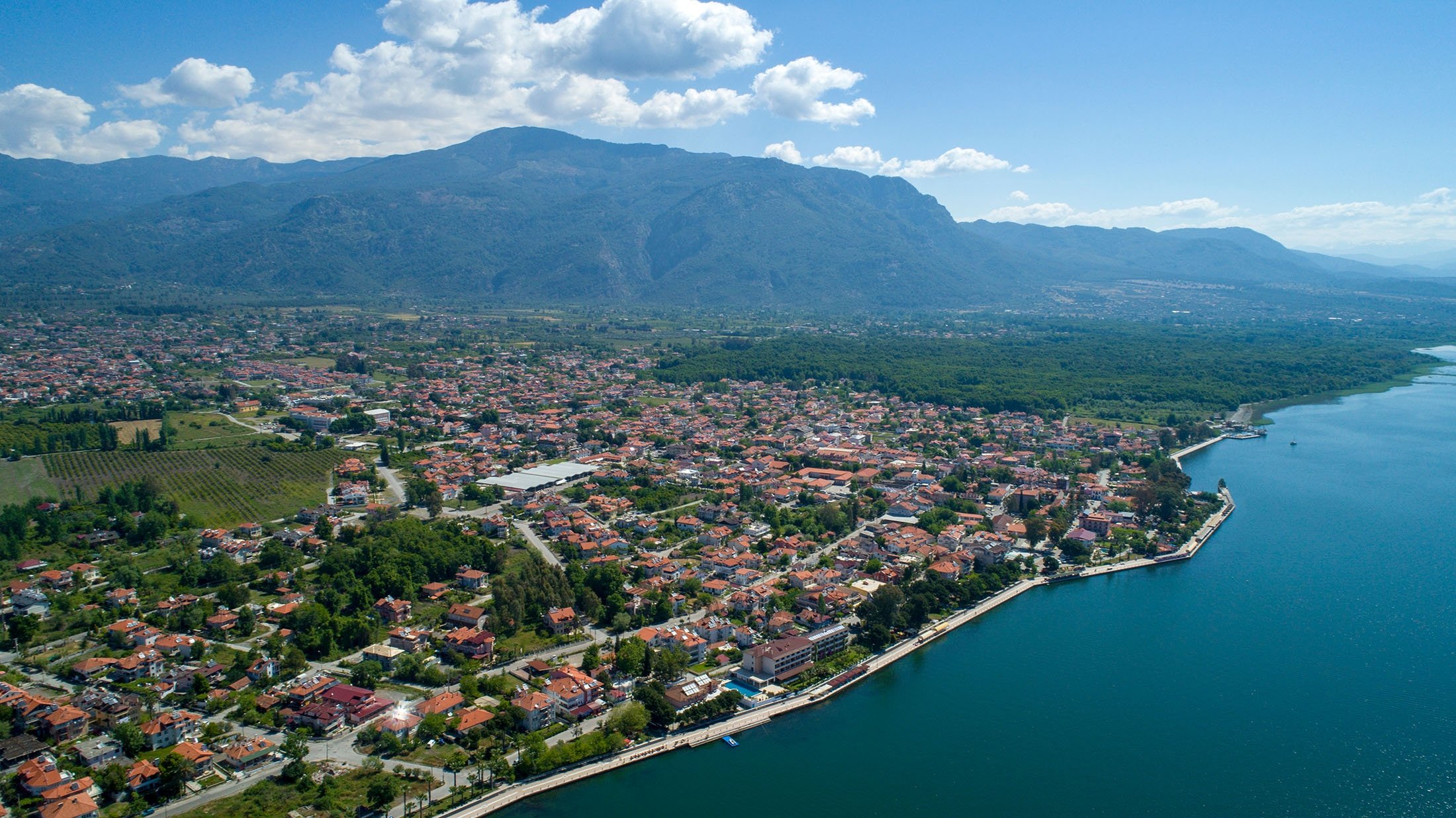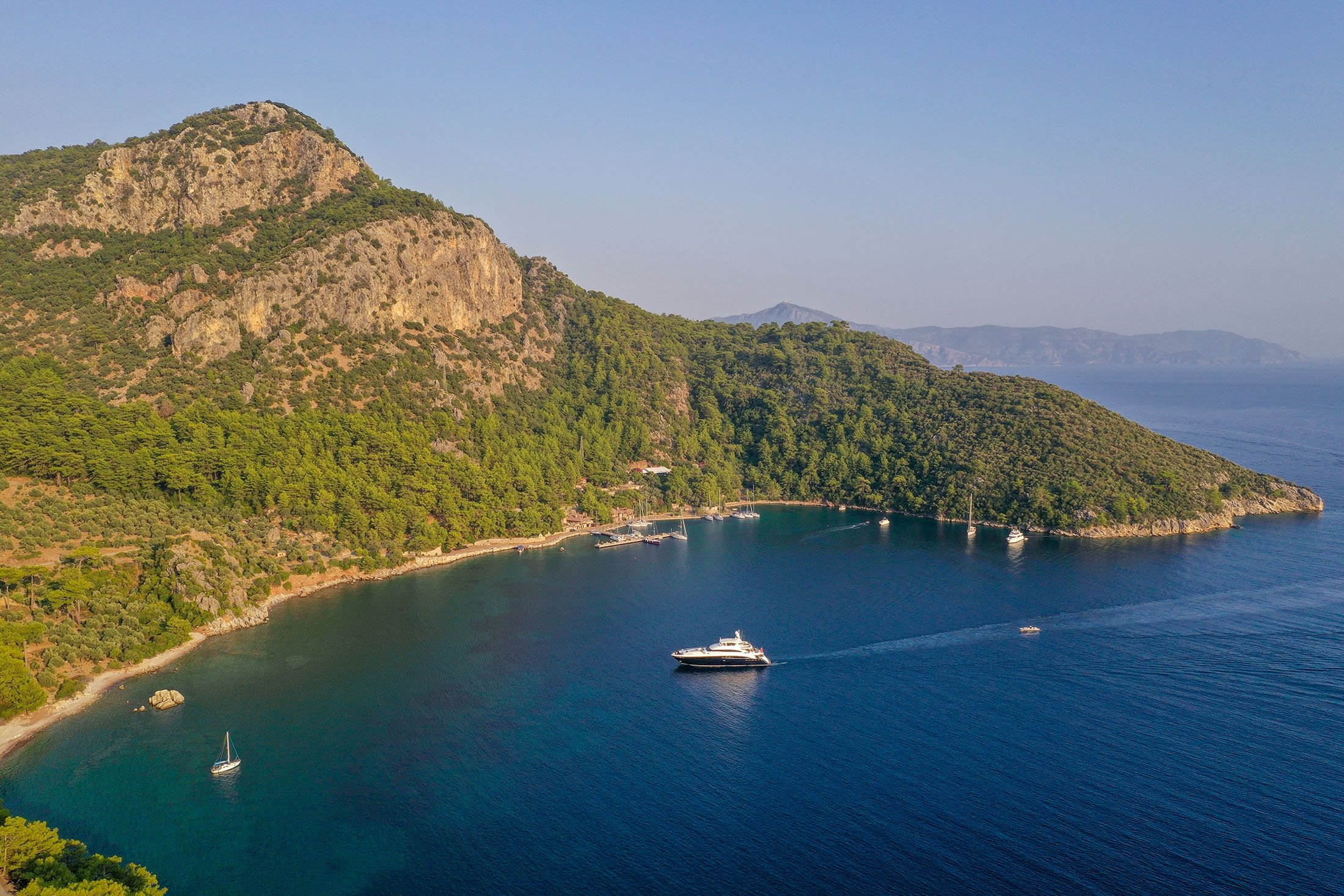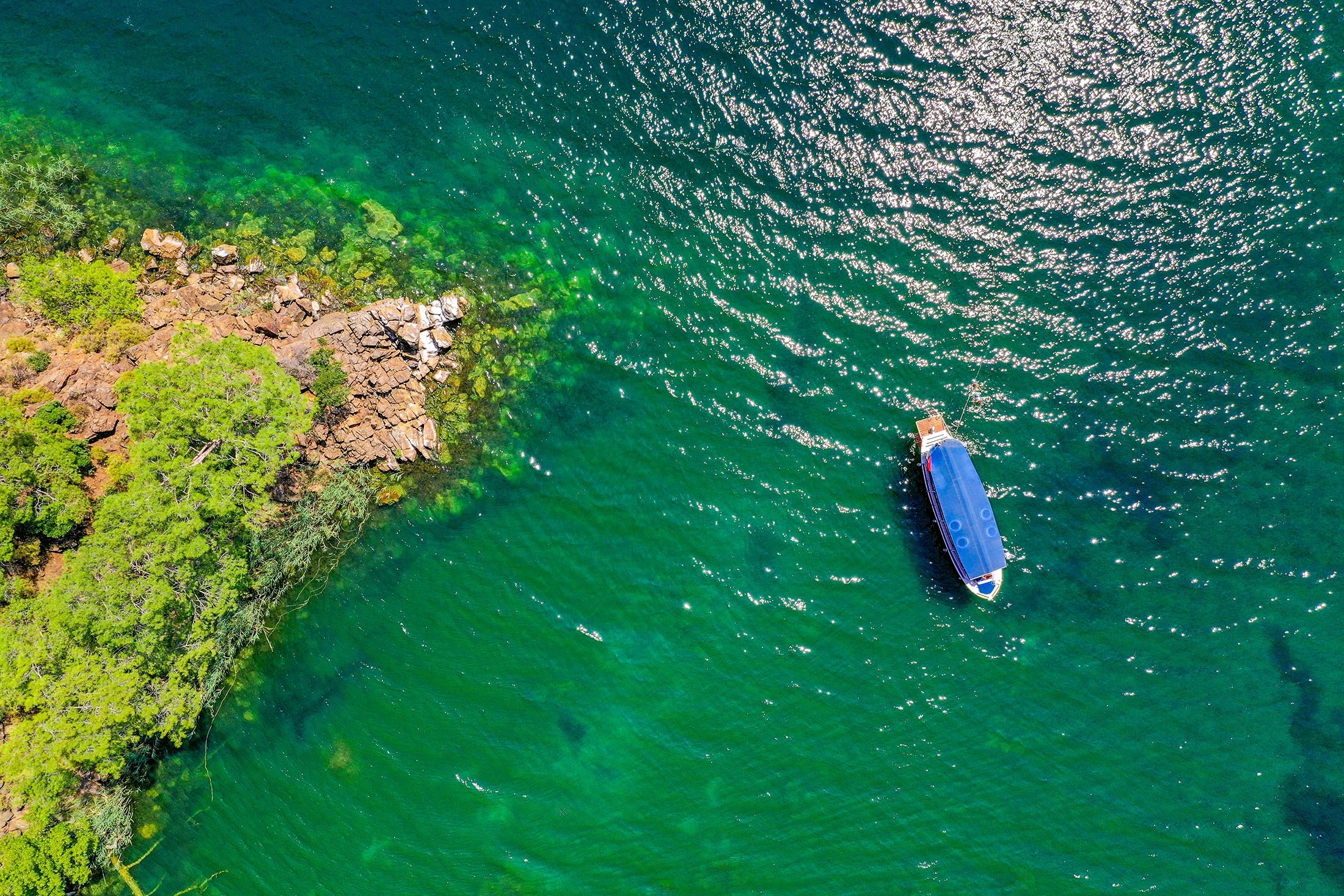© Turkuvaz Haberleşme ve Yayıncılık 2025
While Muğla’s Köyceğiz region recently hit the headlines for being one of the areas struck by wildfires, for many foreign visitors this may have been the first time they heard of what is actually quite a significant area in Turkey.
Located off the beaten path for many vacationers, Köyceğiz is a wonderful destination to discover that is rich in both history and nature. It boasts a picturesque and quintessential Turkish town that joined Cittaslow ranks in 2019, as well as multiple neighboring destinations that include thermal and mud baths, endemic sweet gum forests and restaurants with platforms set above flowing creeks in the forests.
I recently paid a visit to the Köyceğiz market, which is held on Mondays, by taking one of the ferry boats that set out from Dalyan. The boat was the typical Dalyan-style ferry, which has a shallower bottom to protect the turtles the region is famed for and seats approximately 20 guests, all of which were expats. It seems this trip has become part of their regular routine.
The boat arrives and everyone set out to the famous Köyceğiz market, which I must admit was the largest farmers market I have ever seen in Turkey. The market seems to take over the entire town with sections devoted to clothing and textiles, fruits and vegetables and cheeses and olives. The cheese selection was especially impressive with different types of tulums on offer to taste from neighboring Fethiye, Erzincan and even Konya. Meanwhile, throughout the market, local women were preparing snow cones covered with black mulberry syrup for a refreshing treat referred to as bici bici in Turkish.

After enjoying a gözleme in an area adjacent to the market, my fellow boat passengers and I headed back to the lake where some sat at a cafe and others took a short walk to where we could take a refreshing dip in the reed-lined lake.
Once the two-and-a-half-hour stop in Köyceğiz came to an end, we all boarded the boat for the hour-or-so ride back to Dalyan town. A truly memorable experience that I would wish for anyone to share involves watching the spectacular vista as the boat traversed the channels leading from Köyceğiz Lake. I couldn’t help but think of how important this protected region of Turkey is, albeit so much lesser-known.
These days, Köyceğiz, famed for its pine forests and citrus trees, is also known for its honey derived from these trees. The town center has an impressive shop with dozens of honey varieties, all of which you can taste offering the opportunity to try harder-to-find flavors such as lavender and acacia. In addition to honey, some of the best oranges and citrus fruits such as pomegranate and lemons are produced in this region.
Köyceğiz is also home to endemic oriental sweet gum trees, also known as liquid amber. The sap from these trees has been used for medicinal purposes since the time of yore and it is said to have been part of the Egyptian Queen Cleopatra’s own health routine. A wonderful walking path leads along the lake in town to the Köyceğiz Sığla Ormanı, a forest devoted to these trees.

The Köyceğiz area and its surroundings of Dalyan, the town of which is located approximately 20 kilometers (12 miles) away, has been home to multiple civilizations, from the Carians to the Ionians, the Persians, the Hellenes, Romans, Seljuks and Ottomans. The ancient town of Kaunus was an important trade center and its ruins of a Roman Bath and amphitheater and castle walls remain an impressive site. Of course, the Carian rock tombs carved thousands of years ago into the mountains that sit as the backdrop to Dalyan are also breathtaking.
Both of these ancient sites are actually located in an area of Köyceğiz named Çandır, which also happens to be an entirely organic village. These sites and the town are accessible via car from Köyceğiz or a charming rowboat or ferry boat ride from Dalyan.
One of the other most historical and popular activities to do when visiting Köyceğiz is to slather yourself in mud and then relax in the thermal sulfur hot springs at the Sultaniye Kaplıcaları. The thermal springs are said to have the highest radiation levels in Turkey and are believed to help a variety of ailments including rheumatism. They are also said to have been a part of Queen Cleopatra’s beauty routine. The marble-lined sulfuric pool sits inside a large green dome, which is quite a sight when approached by boat.
Köyceğiz, the Dalyan delta and the lake that occupies the space between the two is an important environmentally protected region in Turkey and thus the lake’s banks and the beach it runs into have remained relatively untouched. The lake eventually leads into the Iztuzu Beach, known for being important nesting grounds for Caretta caretta turtles. The lake’s surroundings also offer spectacular birdwatching with herons, kingfishers, falcons, eagles and cormorants. The region also has endemic fish, dragonflies and damselflies in neon colors.
The lake is also populated by mullet, which is used to prepare caviar encased in beeswax that has become the region’s specialty and is referred to as “Dalyan Fıskası.” The caviar can be eaten raw from the casing or prepared into a patty and fried, becoming what the Turks call “havyar köftesi.” Blue crab and eel are also specialties as is “yoğurtlama,” a dish of potatoes, peppers and eggplant served in yogurt.

Köyceğiz is also home to Yuvarlakçay, a valley with a creek that flows from the mountains where a series of restaurants have built platforms over where people can swim in the refreshingly cool water or swing above the creek on a wooden swing that has become a popular Instagram shot spot in recent years. Especially refreshing in the hot summer months, this ice-cold water and the opportunity for shady daytime hikes make this a popular destination for day visitors.
While Köyceğiz truly has everything you could ever ask of a Turkish town and a charming lakeside landscaped promenade with restaurants and cafes, it does not have the hustle and bustle feel of touristic towns. There are also a number of family-run pensions in town for overnight stays.
Köyceğiz is also an ideal destination for those who love to walk or cycle and there are marked “Eco-Trail” paths through many of the forests. The region is best visited by car or incorporated into a boat trip from Dalyan and it is just half an hour from Dalaman airport and less than an hour’s drive from both Marmaris and Fethiye.
